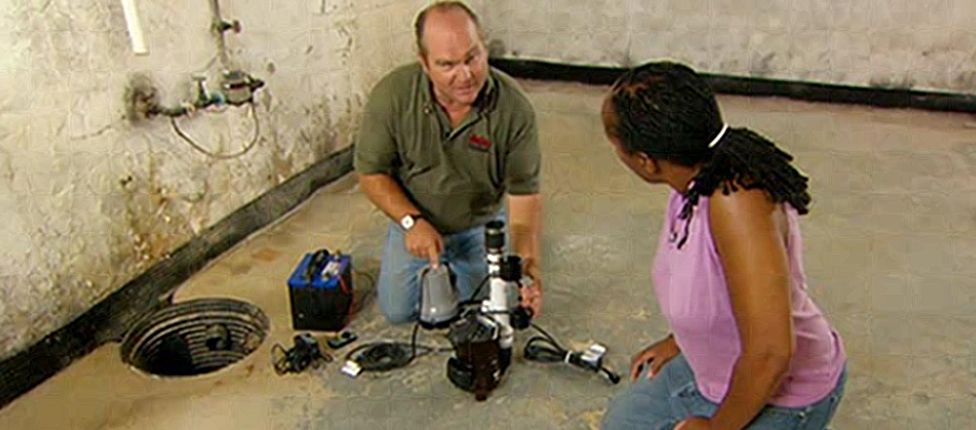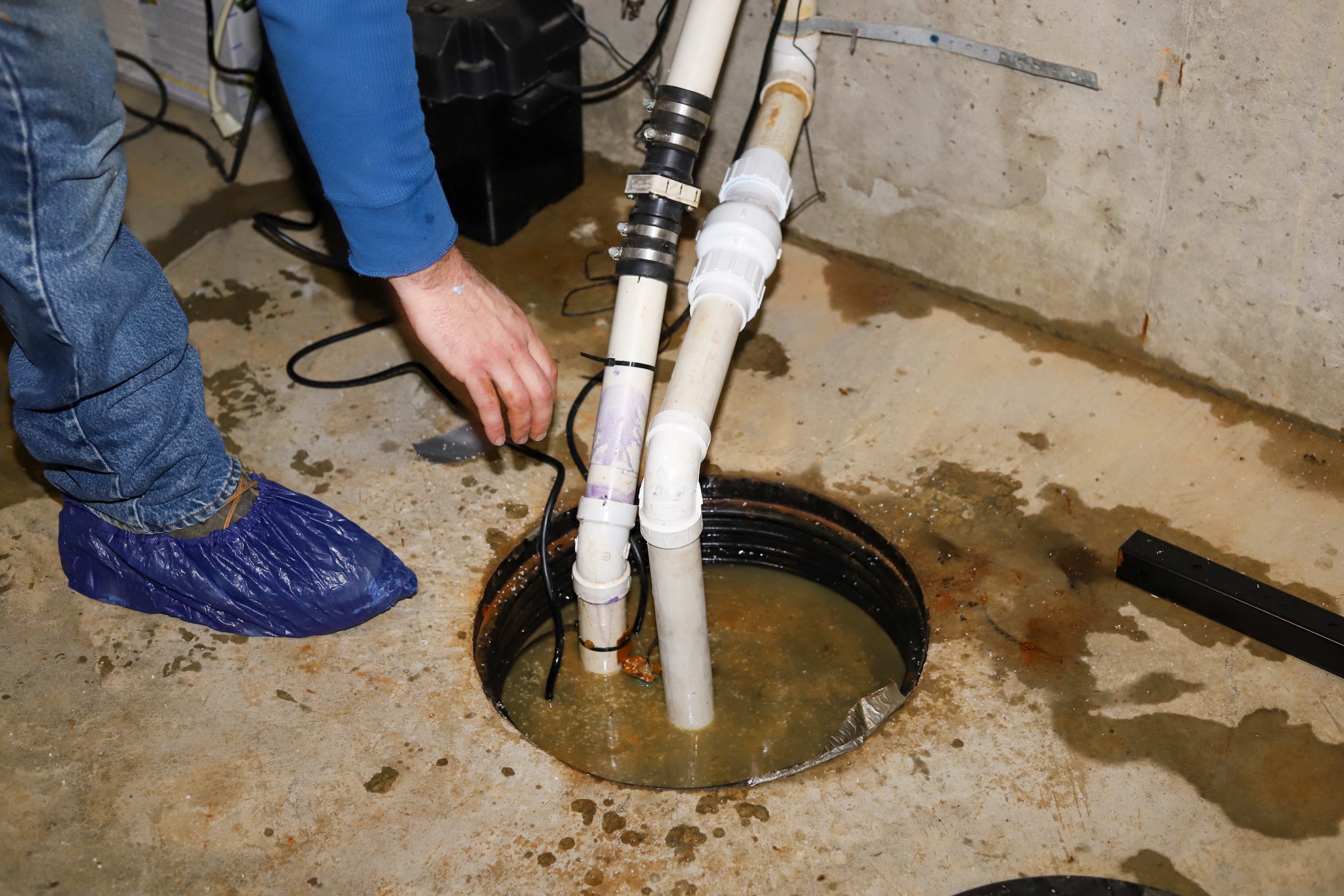We've noticed the article involving Steps to Cleaning Your Sump Pump Properly down the page on the net and think it made perfect sense to write about it with you on this site.

Sump pumps are important elements in lots of homes, particularly in locations susceptible to flooding or excessive wetness. They help prevent water damage by successfully eliminating excess water from basements or crawl spaces. Nevertheless, like any other appliance, sump pumps need routine maintenance to ensure they work efficiently when needed one of the most. Cleaning your sump pump is an essential part of its maintenance, and understanding just how to do it appropriately can save you from pricey repair work and possible catastrophes.
Introduction
Keeping a clean sump pump is crucial for its appropriate performance and durability. Ignoring this essential job can lead to clogs, breakdowns, and eventually, water damage to your residential or commercial property. For that reason, learning just how to cleanse a sump pump is essential for property owners that rely on these gadgets to keep their cellars completely dry and secured.
Indications of a Dirty Sump Pump
Recognizing when your sump pump requires cleaning is essential for stopping prospective malfunctions. Some usual indicators that show a dirty sump pump consist of odd sounds during procedure, lowered water flow, and noticeable particles in the pit. If you see any one of these signs, it's vital to clean your sump pump without delay to stay clear of any kind of additional problems.
Preparing for Cleansing
Before you start cleansing your sump pump, it's vital to take some security preventative measures. Beginning by turning off the power to the pump to stay clear of any type of electrical mishaps. Additionally, put on appropriate safety gear, such as gloves and safety glasses, to shield on your own from dust, debris, and possible microorganisms.
Understanding the Sump Pump
Before diving into the cleaning process, it's necessary to have a basic understanding of how a sump pump works. Normally set up in a pit or container listed below the basement floor, a sump pump includes a number of vital parts, consisting of a pump, a float button, and a discharge pipeline. When water builds up in the pit, the float switch triggers the pump, which after that pumps the water out via the discharge pipe, far from the structure's structure.
Step-by-step Guide to Cleaning Up a Sump Pump
Shutting down the Power
Begin by detaching the power supply to the sump pump to stop any crashes while cleaning.
Looking For Correct Performance
Before reinstalling the pump, do a fast examination to guarantee that the float switch activates the pump properly. Pour some water into the sump pit and observe the pump's operation. If everything is functioning correctly, you can reassemble the pump and reconnect the power supply.
Removing Particles and Dirt
Use a bucket or an inside story to eliminate any type of visible particles, dust, or debris from the sump pit. Dispose of the particles properly to avoid it from clogging the pump or the discharge pipeline.
Cleaning the Pump and Float Switch Over
When the pit is free from particles, very carefully eliminate the pump from the pit. Check the pump and the float button for any indicators of damage or wear. Utilize a soft brush or cloth to cleanse the surfaces and eliminate any type of built up crud.
Purging the System
After cleansing the pump and float switch, flush the sump pit with clean water to remove any kind of continuing to be dust or debris. This will assist guarantee that the pump operates efficiently and effectively.
Maintenance Tips to Keep Your Sump Pump Clean
Along with routine cleaning, there are a number of maintenance ideas you can comply with to maintain your sump pump in optimum condition:
- Regular Assessment: Inspect your sump pump frequently for any indicators of wear, damage, or obstructions.
- Keeping the Surrounding Area Clean: Guarantee that the location around the sump pit is free of debris, dust, and blockages.
- Evaluating the Pump Periodically: Check your sump pump periodically by pouring water into the pit and observing its operation. This will assist you determine any kind of possible issues before they intensify.
Final thought
Cleaning your sump pump is a crucial element of its maintenance and makes sure that it operates efficiently when you need it the most. By following the steps detailed in this overview and incorporating regular upkeep into your regimen, you can prolong the life-span of your sump pump and safeguard your home from water damages.
6 STEPS ON HOW TO CLEAN A SUMP PUMP PROPERLY
UNDERSTANDING SUMP PUMPS
Your sump pump plays a crucial role in protecting your home by managing and removing excess water. It primarily functions as a “shield”, guarding your basement against the damaging effects of water accumulation. The pump is housed in a sump pit in the lowest part of your basement, and its job is to pump out any water that collects there.
During heavy rainfalls or when snow melts rapidly, water can infiltrate your basement, posing potential risks like flooding, structural damage, and harmful mold growth. Here, the sump pump springs into action, pumping out the intruding water and directing it away from your home.
SAFETY FIRST
Before cleaning, remember to prioritize safety. Disconnect the sump pump from the power source to prevent any accidental electric shocks. Also, wear sturdy gloves to protect your hands from any sharp or dirty components within the pump.
REMOVE THE SUMP PUMP
After ensuring your safety, the next step is to remove the sump pump from its pit. Doing this might require careful maneuvering as you don’t want to damage any pump components. Once removed, clean the sump pit to remove any accumulated debris or sludge.
INSPECT THE PUMP
Inspect the pump for any visible signs of wear or damage. Check the power cord, float switch, and impeller housing. If any components look worn out or damaged, consider replacing them to ensure optimal performance.
CLEAN THE PUMP
Thoroughly clean the pump with warm, soapy water. Make sure to rid it of any dirt, gravel, or other debris that might impede its performance. You can use a toothbrush to clean the small, hard-to-reach parts of the pump.
REINSTALL THE SUMP PUMP
- Reinstall the pump into the sump pit
- Make sure it’s positioned correctly to remove the water effectively
- Once it’s back in place, reconnect it to the power source
TEST THE PUMP
Finally, pour some water into the pit to ensure the pump works correctly. It should start automatically and begin pumping out the water; if it doesn’t, check the power source and the positioning of the pump.
Remember, while cleaning your sump pump is an essential part of home maintenance, hiring a professional plumber for a thorough inspection and cleaning at least once a year is also important. This will ensure that your pump is in optimal condition, ready to protect your home from potential water damage.
BEST PRACTICES FOR CLEANING SUMP PUMP DISCHARGE PIPES
- Regular Inspection: Regularly inspect your discharge pipes, especially during heavy rainfall or snowmelt periods. Look for any signs of blockage or damage. Early detection of problems can prevent serious issues down the line.
- Periodic Cleaning: Over time, sediment and debris can accumulate in the discharge pipes, impeding the flow of water. Regular cleaning helps keep the pipes clear and functioning efficiently. You can use a high-pressure water jet to effectively clean the pipes.
- Insulation During Winter: In colder climates, discharge pipes can freeze, blocking the outflow of water. Protect your discharge pipes from freezing temperatures by insulating them with foam pipe insulation. This will ensure the sump pump can continue to discharge water even in freezing conditions.
- Proper Positioning: The discharge pipe should be positioned to direct water away from your home’s foundation. Improper positioning can lead to water seeping back into the basement. Ensure the pipe is long enough and angled correctly.
- Installation of a Check Valve: A check valve prevents water from flowing back into your sump pit after the pump has pushed it out. Installing a check valve helps maintain the efficiency of your sump pump and reduces the risk of flooding.
- Minimize Pipe Turns: Every curve or turn in the discharge pipe can decrease the efficiency of water flow. By minimizing turns and bends in your discharge pipe, you can increase the efficiency of your sump pump.
https://www.fullspeedplumbing.com/how-to-clean-a-sump-pump-properly9999/

As a passionate person who reads on Cleaning & Maintenance Tips for Your Home's Sump Pump, I think sharing that chunk was a good thing. If you appreciated our page please be sure to pass it around. Bless you for your time. Come back soon.
Hire A Pro
Comments on “An Guide to Properly Cleaning a Sump Pump”